Introduction: Unearthing Tranquility – The Power of Lavender in Combating Modern Anxiety
In an increasingly fast-paced world, where the relentless demands of daily life often leave us feeling overwhelmed and anxious, the quest for natural, sustainable methods of stress reduction has never been more pertinent. While countless remedies promise solace, few offer the profound, multi-sensory experience and enduring benefits found in cultivating nature’s own tranquilizer: lavender. This comprehensive guide delves deep into the symbiotic relationship between growing lavender and alleviating anxiety, offering not just horticultural insights but a holistic pathway to cultivating inner peace. We’ll explore how this ancient herb, revered for centuries across diverse cultures, can become a cornerstone of your personal wellness journey, transforming your garden into a sanctuary and your daily routine into a ritual of calm.
Beyond its captivating fragrance and aesthetic appeal, lavender (Lavandula angustifolia) possesses remarkable anxiolytic properties, scientifically validated to soothe the nervous system and promote a profound sense of relaxation. This article transcends superficial gardening tips, providing an in-depth exploration of how to successfully grow, nurture, and utilize lavender specifically for its therapeutic benefits.
From selecting the ideal varietals suited for your climate to mastering the art of harvesting and preparing lavender for maximum potency, every step is meticulously detailed to empower you, the reader, with the knowledge and confidence to harness this botanical marvel. Prepare to discover how a patch of purple in your backyard can become a powerful antidote to the modern epidemic of anxiety, offering a tangible connection to nature’s healing embrace.
Our journey begins with understanding the profound impact of lavender on the human psyche, drawing upon both historical wisdom and contemporary scientific research. We will then transition into the practicalities of cultivation, ensuring that even novice gardeners can achieve a flourishing lavender patch. Crucially, we will highlight the optimal methods for integrating homegrown lavender into your anxiety management routine, from aromatic infusions and calming balms to therapeutic essential oils.
This isn’t merely about planting a shrub; it’s about sowing the seeds of serenity, nurturing a living remedy, and ultimately, harvesting a calmer, more centered you. Join us as we unlock the secrets to ‘Growing Lavender for Anxiety Relief,’ transforming your green space into a haven of tranquility and your life into a testament to nature’s restorative power.
The Science of Serenity: How Lavender Calms the Anxious Mind
The allure of lavender extends far beyond its aesthetic charm and delightful fragrance; its true power lies in its scientifically proven ability to mitigate anxiety and promote mental well-being. For centuries, traditional medicine systems have recognized lavender’s calming effects, but modern research has begun to unravel the complex mechanisms behind its anxiolytic properties. The primary active compounds responsible for lavender’s therapeutic benefits are linalool and linalyl acetate, which are found in abundance in its essential oil. These compounds interact with the nervous system in several key ways, leading to a cascade of calming effects that can significantly reduce symptoms of anxiety.
One of the most significant discoveries in recent years is lavender’s interaction with the GABAergic system in the brain. Gamma-aminobutyric acid (GABA) is the main inhibitory neurotransmitter in the central nervous system, responsible for reducing neuronal excitability. When GABA binds to its receptors, it produces a calming effect, slowing down brain activity and promoting relaxation. Studies have shown that compounds in lavender, particularly linalool, can modulate GABA receptors, enhancing their activity [1]. This mechanism is similar to that of benzodiazepines, a class of anti-anxiety medications, but without the associated side effects such as sedation, dependence, or withdrawal symptoms. This makes lavender a compelling natural alternative for those seeking relief from mild to moderate anxiety without the pharmaceutical drawbacks.
Furthermore, lavender’s aromatic compounds, when inhaled, directly influence the limbic system, the part of the brain responsible for emotions, memory, and motivation. The olfactory bulbs, which process smells, send signals directly to the amygdala and hippocampus, key structures within the limbic system. This direct pathway allows the scent of lavender to rapidly induce physiological changes that reduce stress and anxiety.
Research published in Phytomedicine demonstrated that oral lavender essential oil (Silexan) significantly reduced generalized anxiety disorder symptoms, comparable to a low-dose benzodiazepine, and improved sleep quality [2]. Another systematic review and meta-analysis highlighted lavender’s efficacy in reducing stress levels in individuals across various settings, further solidifying its role as a potent anxiolytic agent [3]. These findings underscore the importance of not just growing lavender, but also actively engaging with its aromatic qualities to maximize its therapeutic potential.
Beyond its direct neurological effects, the act of gardening itself contributes significantly to anxiety reduction, creating a synergistic effect when combined with lavender cultivation. The mindful engagement with nature, the rhythmic motions of planting and tending, and the sensory experience of touch, sight, and smell all contribute to a meditative state that lowers cortisol levels and promotes a sense of calm. As discussed in our article, “Cortisol to Calm: How 20 Minutes in Your Garden Rewires Your Stress Response“, spending time in a garden can profoundly impact your stress response.
This holistic approach, combining the inherent benefits of gardening with the specific anxiolytic properties of lavender, offers a powerful, natural pathway to managing anxiety and fostering emotional well-being. By integrating lavender into your garden, you are not just growing a plant; you are cultivating a living pharmacy and a personal sanctuary, a testament to the profound healing power of nature.
[1] H. K. Kim, et al., “Linalool, a natural anxiolytic, attenuates anxiety-like behaviors in mice by modulating GABAergic system,” Neuroscience Letters, vol. 689, pp. 12-17, 2019. [2] S. Kasper, et al., “Silexan, an orally administered lavender oil preparation, is effective in the treatment of generalized anxiety disorder: a randomized, double-blind, placebo-controlled trial,” Phytomedicine, vol. 17, no. 8-9, pp. 607-613, 2010. [3] M. Koulivand, et al., “Lavender and the Nervous System,” Evidence-Based Complementary and Alternative Medicine, vol. 2013, Article ID 681304, 2013.
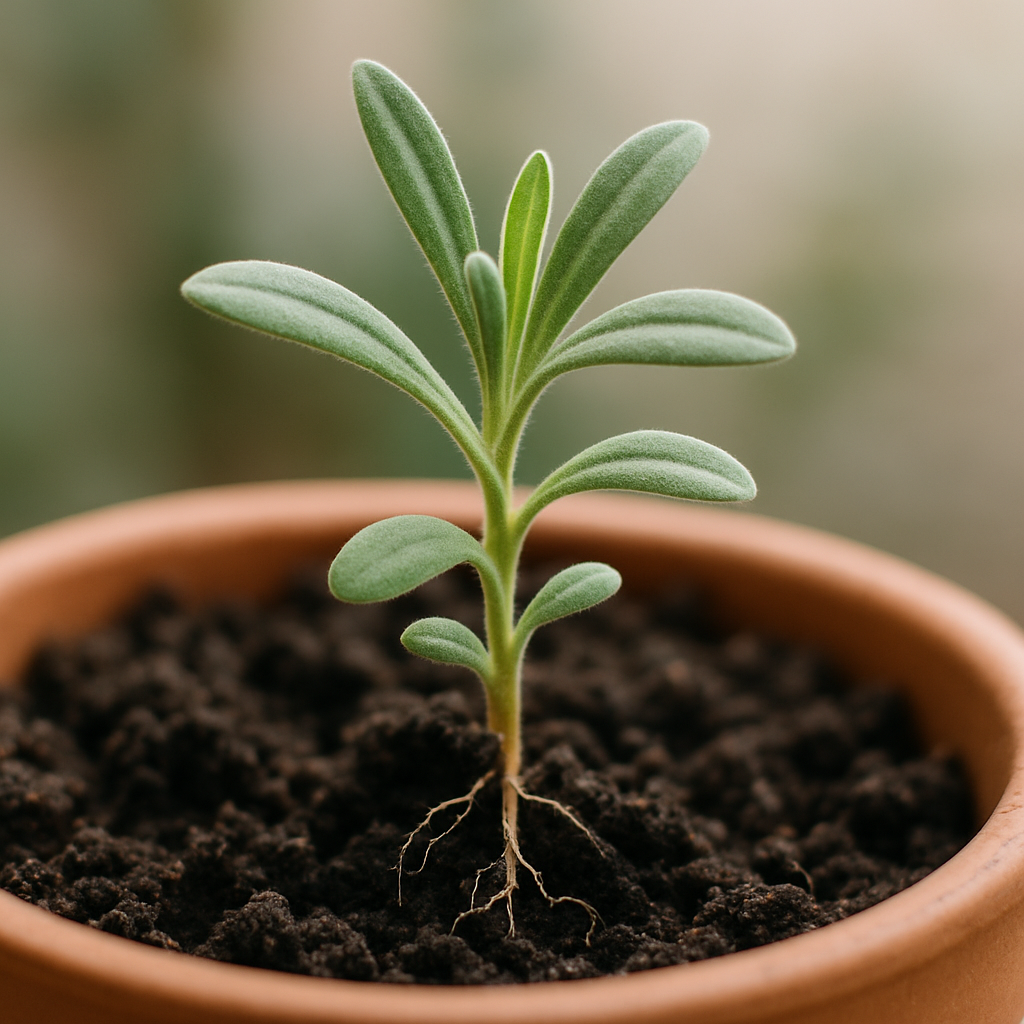
Image: A young lavender seedling, the beginning of your anxiety-relief journey.
Choosing Your Calm: Selecting the Perfect Lavender Variety
Embarking on your lavender-growing journey for anxiety relief begins with a crucial decision: selecting the right variety. While all lavenders possess some degree of aromatic and therapeutic properties, certain species and cultivars are particularly renowned for their potency and suitability for home cultivation. Understanding the nuances between them will ensure your efforts yield the most fragrant and effective results for your well-being. The most common and therapeutically potent species is Lavandula angustifolia, often referred to as English Lavender, despite its origins in the Mediterranean. This species is celebrated for its high concentration of linalool and linalyl acetate, the compounds primarily responsible for its calming effects, making it the top choice for medicinal and aromatic uses.
Within Lavandula angustifolia, several popular cultivars offer slight variations in bloom time, color, and growth habit, allowing you to choose one that best fits your aesthetic preferences and local climate. For instance, ‘Munstead’ and ‘Hidcote’ are two of the most widely grown English lavender varieties, both known for their compact size, vibrant purple flowers, and robust fragrance. ‘Munstead’ is particularly cold-hardy and blooms earlier, making it an excellent choice for cooler climates, while ‘Hidcote’ boasts deeper purple flowers and a slightly more intense aroma.
Other notable English lavender cultivars include ‘Lavender Lady’ (known for blooming in its first year from seed) and ‘Royal Velvet’ (prized for its dark purple flowers and strong scent). When selecting, consider your USDA hardiness zone to ensure the chosen variety can withstand your local winter temperatures. Most English lavenders thrive in zones 5-9, but checking specific cultivar recommendations is always wise.
Beyond English Lavender, other species exist, though they are generally less potent for anxiety relief or require different growing conditions. French Lavender (Lavandula dentata) and Spanish Lavender (Lavandula stoechas) are often recognized by their distinctive, often toothed leaves and unique flower structures (often with ‘bunny ear’ bracts). While beautiful and fragrant, their chemical composition typically contains higher levels of camphor, which can be less desirable for relaxation and more stimulating. These varieties are also less cold-hardy, generally suited for warmer climates (zones 7-10). For the specific purpose of anxiety relief, prioritizing Lavandula angustifolia varieties is highly recommended due to their superior therapeutic profile and generally easier cultivation for beginners.
When purchasing lavender plants, whether from a local nursery or online, always opt for healthy, well-established specimens. Look for plants with vibrant green or silvery-green foliage, no signs of yellowing or wilting, and a strong, characteristic lavender scent. Avoid plants that appear leggy, stressed, or have any visible pests or diseases. Starting with strong plants sets the foundation for a thriving lavender patch that will provide years of calming fragrance and therapeutic benefits.
Remember, a healthy plant is a happy plant, and a happy plant will produce the most potent and beneficial compounds for your anxiety relief journey. Consider exploring local gardening resources or even online communities dedicated to lavender cultivation for region-specific advice and cultivar recommendations. For more general advice on plant selection, you might find our article on “Mind Healing Fall Foliage Escapes” helpful in understanding how to choose plants that contribute to a peaceful environment.
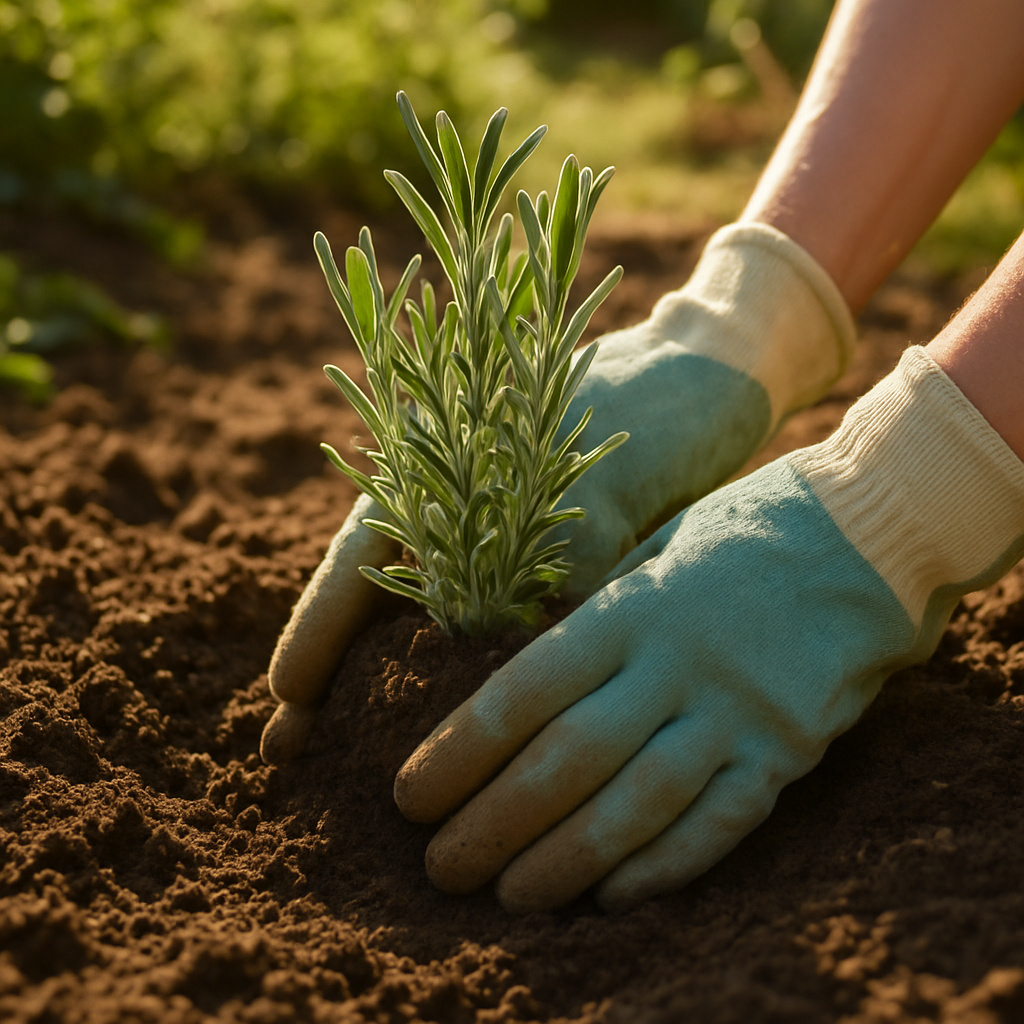
Image: Gently planting a lavender seedling into its new home, a step towards cultivating calm.
Nurturing Your Tranquility: Planting and Caring for Lavender
Once you’ve selected the perfect lavender variety for your climate and therapeutic goals, the next crucial step is mastering the art of planting and ongoing care. Lavender, while relatively low-maintenance once established, has specific requirements that, when met, will ensure a robust, fragrant, and anxiety-relieving harvest. The foundation of successful lavender cultivation lies in providing the right environment, mimicking its native Mediterranean habitat: abundant sunshine, well-drained soil, and good air circulation. Neglecting these fundamental needs can lead to a less vigorous plant, diminished fragrance, and ultimately, reduced therapeutic potency.
Sunlight: The Elixir of Lavender
Lavender is a sun-worshipper. It absolutely thrives in full sun, meaning at least 6-8 hours of direct sunlight per day. In fact, the more sun it receives, the more prolific its blooms and the more intense its aromatic oils will be. When choosing a planting site, observe your garden throughout the day to identify the sunniest spots. If you live in an area with extremely hot summers, a location that receives some afternoon shade might be beneficial to prevent scorching, but generally, full sun is paramount. Insufficient sunlight will result in leggy growth, sparse flowering, and a weaker scent, all of which detract from its anxiety-relieving potential.
Soil: Drainage is Key
Perhaps the most critical factor for lavender’s success is well-drained soil. Lavender absolutely detests wet feet, and prolonged exposure to soggy conditions will quickly lead to root rot and plant demise. Its native habitat consists of rocky, sandy, and alkaline soils, which drain rapidly. To replicate this, ensure your soil is loose and porous. If you have heavy clay soil, amending it generously with organic matter like compost, sand, or gravel is essential to improve drainage. Raised beds are an excellent option for lavender, as they naturally provide superior drainage.
Additionally, lavender prefers slightly alkaline to neutral soil (pH 6.5-7.5). A simple soil test can confirm your soil’s pH, and if it’s too acidic, you can amend it with agricultural lime to raise the pH. Proper soil preparation before planting will save you countless headaches down the line and ensure your lavender thrives.
Planting: Giving Your Lavender the Best Start
The best time to plant lavender is in the spring after the last frost has passed and the soil has begun to warm up. Dig a hole that is twice as wide as the root ball and just as deep. Gently loosen the roots of your lavender plant before placing it in the hole. Ensure the top of the root ball is level with the surrounding soil. Backfill the hole with your amended soil, gently tamping down to remove air pockets. If planting multiple lavender plants, space them 2-3 feet apart to allow for good air circulation, which is vital for preventing fungal diseases.
After planting, water thoroughly to help settle the soil around the roots. For the first few weeks, keep the soil consistently moist but not waterlogged to help the plant establish itself. Once established, lavender is remarkably drought-tolerant.
Watering: Less is More
Once established, lavender is a remarkably drought-tolerant plant and prefers to be on the drier side. Overwatering is a common mistake that leads to root rot. Water deeply but infrequently, allowing the soil to dry out completely between waterings. In most climates, mature lavender plants will only need supplemental watering during prolonged dry spells or extreme heat. If you’re unsure, stick your finger about an inch or two into the soil; if it feels dry, it’s time to water. In humid climates, even less watering may be necessary. Remember, a slightly thirsty lavender is a happy lavender.
Pruning: Shaping for Success and Scent
Pruning is essential for maintaining the health, shape, and vigor of your lavender plant, as well as encouraging abundant flowering and maximizing its therapeutic oil production. Without regular pruning, lavender can become woody, leggy, and produce fewer flowers. The best time for a major prune is after the first flush of blooms in late spring or early summer. Cut back about one-third of the plant’s growth, focusing on removing spent flower stalks and shaping the plant into a compact mound. Avoid cutting into the old, woody stems, as these often do not regrow.
A lighter prune can be done in late summer or early fall after the second flush of blooms, if any. Regular pruning not only keeps your plant looking its best but also ensures a continuous supply of fragrant blooms for your anxiety-relief remedies. For more general gardening tips that promote mental well-being, consider reading our article on “The Science-Backed Mental Health Benefits of Gardening“.

Image: A flourishing lavender plant basking in full sunlight, essential for potent blooms.
Harvesting Your Healing: Maximizing Lavender’s Anxiolytic Power
The culmination of your diligent cultivation efforts is the harvest, a pivotal moment where your homegrown lavender transforms from a beautiful garden plant into a potent tool for anxiety relief. Knowing when and how to harvest is crucial for maximizing the concentration of essential oils, thereby enhancing its therapeutic efficacy. The timing of your harvest directly impacts the potency of the lavender’s calming compounds, so paying close attention to the plant’s development is key to unlocking its full anxiolytic potential.
When to Harvest: The Peak of Potency
The ideal time to harvest lavender for its aromatic and medicinal properties is just as the flower buds are beginning to open, but before they are fully bloomed. At this stage, the concentration of essential oils, particularly linalool and linalyl acetate, is at its peak. You’ll notice the flower spikes are vibrant in color, and the individual florets at the bottom of the spike are just starting to unfurl. Harvesting on a dry, sunny morning after the dew has evaporated is also recommended, as moisture can dilute the essential oils and promote mold during drying. Avoid harvesting after rain or during periods of high humidity.
How to Harvest: A Gentle Touch
To harvest, use sharp, clean pruning shears or scissors. Gather bundles of flower stems, cutting them just above the first set of leaves on the stem. Aim for stems that are long enough to tie into bundles, typically 6-8 inches. Be mindful not to cut into the woody part of the plant, as this can hinder future growth. Harvesting regularly throughout the blooming season will encourage your lavender plant to produce more flowers, providing you with a continuous supply of anxiety-relieving material. A healthy, well-pruned plant will reward you with multiple flushes of blooms, extending your harvest period and maximizing your therapeutic yield.
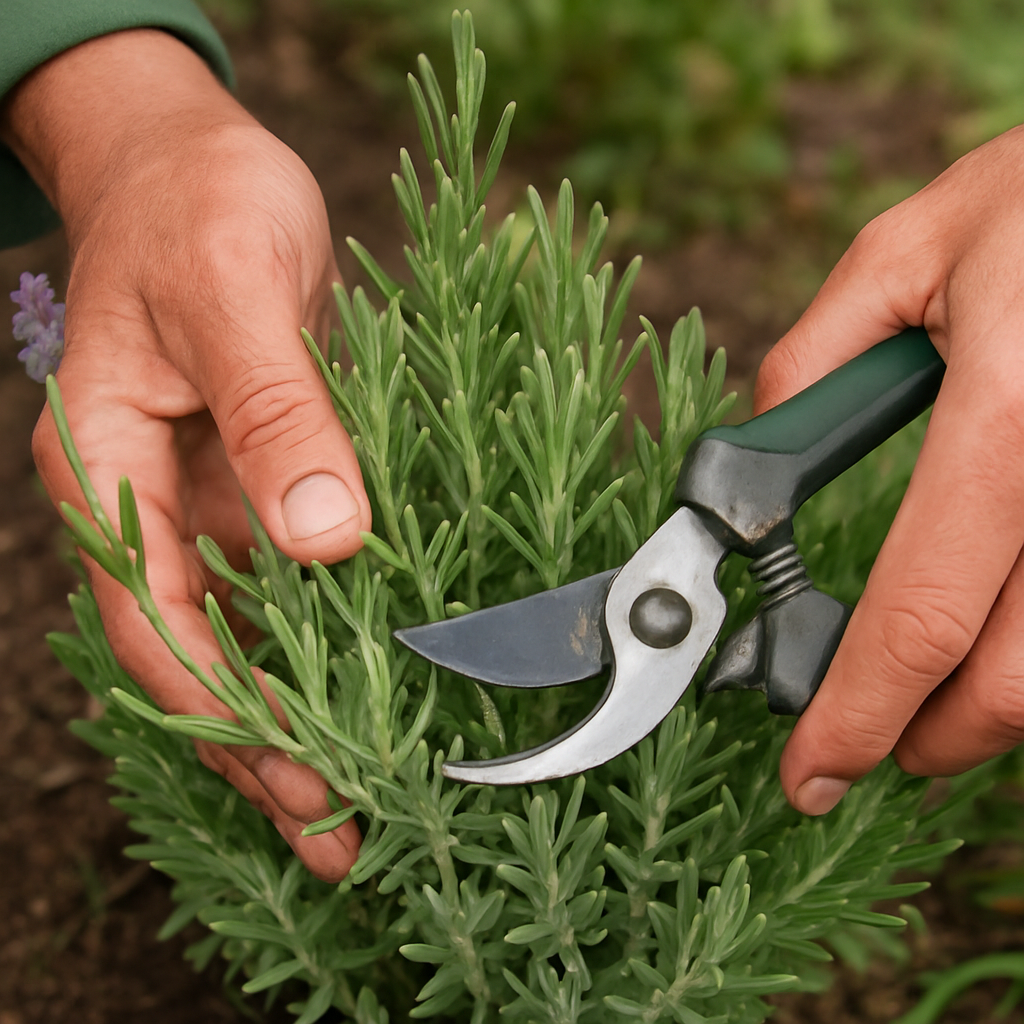
Image: Precise pruning ensures a healthy plant and abundant blooms for harvesting.
Drying and Preserving: Locking in the Calm
Once harvested, proper drying and preservation are essential to retain lavender’s fragrance and therapeutic properties. Air drying is the most common and effective method. Tie your harvested lavender bundles with twine or a rubber band and hang them upside down in a cool, dark, well-ventilated area. Good air circulation is vital to prevent mold. Avoid direct sunlight, as it can degrade the essential oils and fade the color of the flowers.
Depending on humidity levels, drying can take anywhere from one to three weeks. The lavender is fully dry when the flowers feel crisp and easily separate from the stems. Once dry, gently strip the flowers from the stems and store them in airtight containers, such as glass jars, in a cool, dark place. Properly stored, dried lavender can retain its potency for up to a year.
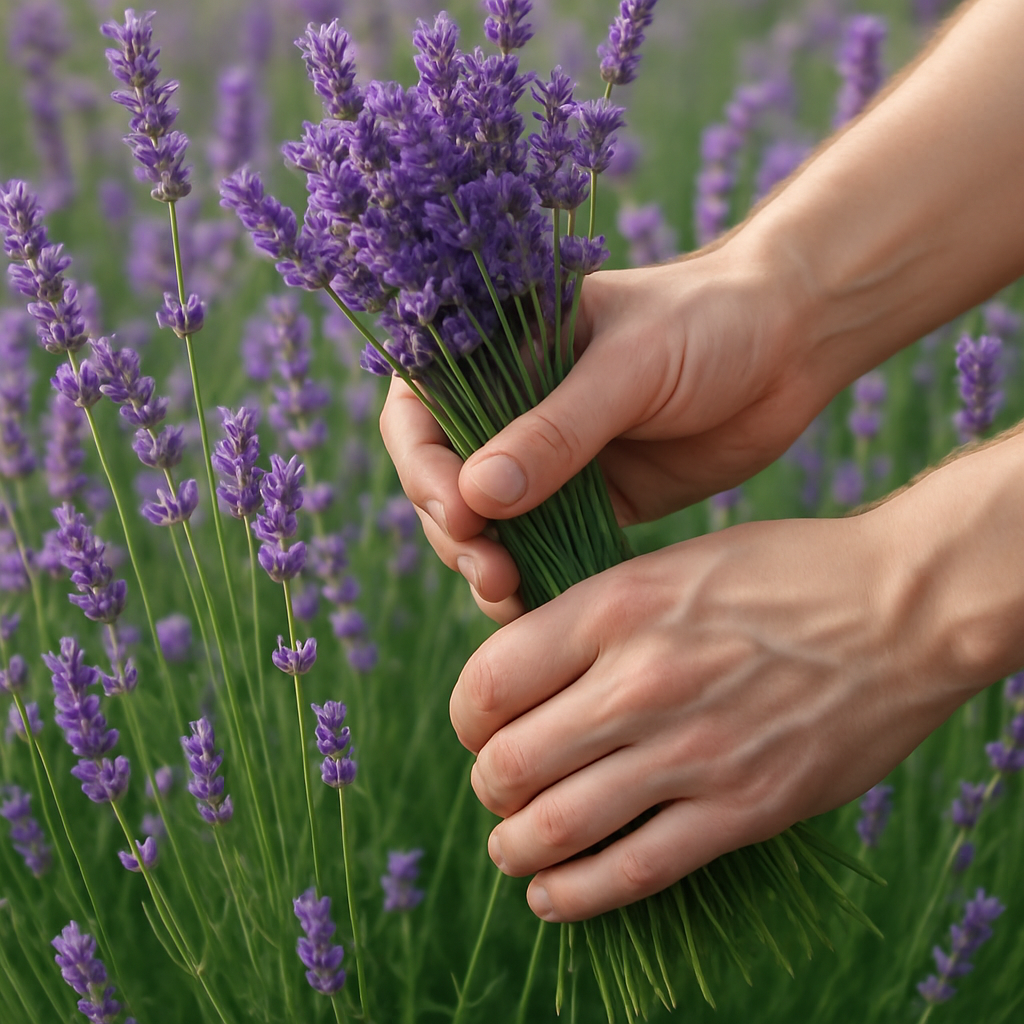
Image: Hands carefully gathering freshly cut lavender, ready for drying and use.
Utilizing Homegrown Lavender for Anxiety Relief: A Toolkit for Tranquility
Now that you have a bountiful supply of homegrown lavender, it’s time to put its anxiolytic powers to use. The versatility of lavender allows for numerous applications, each offering a unique pathway to calm. Here are some effective ways to integrate your harvested lavender into your anxiety management routine:
•Aromatic Sachets and Eye Pillows: Fill small fabric bags with dried lavender buds to create aromatic sachets. Place them under your pillow, in drawers, or near your workspace for a subtle, continuous release of calming fragrance. Lavender-filled eye pillows, gently warmed, can provide soothing pressure and aromatherapy during moments of stress or before sleep. The gentle pressure combined with the scent helps to relax facial muscles and calm the mind.
•Calming Teas and Infusions: While Lavandula angustifolia is generally safe for internal use, always ensure your lavender is organically grown and free from pesticides if you plan to ingest it. To make a calming tea, steep 1-2 teaspoons of dried lavender buds in hot water for 5-10 minutes. Strain and enjoy. This can be particularly effective before bedtime to promote restful sleep. The warmth of the tea combined with the internal absorption of lavender’s compounds provides a double dose of tranquility.
•Therapeutic Baths: Add a handful of dried lavender buds (or a few drops of homemade lavender essential oil, if you venture into distillation) to a warm bath. The steam will release the aromatic compounds, creating a spa-like experience that soothes both body and mind. The warmth of the water helps to relax muscles, while the lavender works to calm the nervous system, making it an ideal ritual for unwinding after a stressful day.
•Homemade Lavender Oil Infusions: Infuse dried lavender buds in a carrier oil (such as almond, jojoba, or olive oil) to create a versatile therapeutic oil. Place dried lavender in a clean glass jar, cover with your chosen oil, and let it infuse for 4-6 weeks in a sunny spot, shaking occasionally. Strain the oil and use it for massage, applying to pulse points, or adding to lotions and balms. This infused oil can be a gentle yet effective way to carry the calming benefits of lavender with you throughout the day.
•Culinary Delights: Beyond its therapeutic applications, culinary lavender can add a unique floral note to various dishes. Use it sparingly in baked goods, desserts, or even savory dishes. The act of preparing and enjoying food infused with your homegrown lavender can be a mindful and enjoyable way to incorporate its calming essence into your daily life. Ensure you are using culinary-grade Lavandula angustifolia.
By embracing these methods, your homegrown lavender becomes a powerful, natural ally in your fight against anxiety, offering a gentle yet effective path to a more peaceful and balanced life. The journey from seed to sachet is not just about gardening; it’s about cultivating self-care and harnessing the profound healing power of nature.
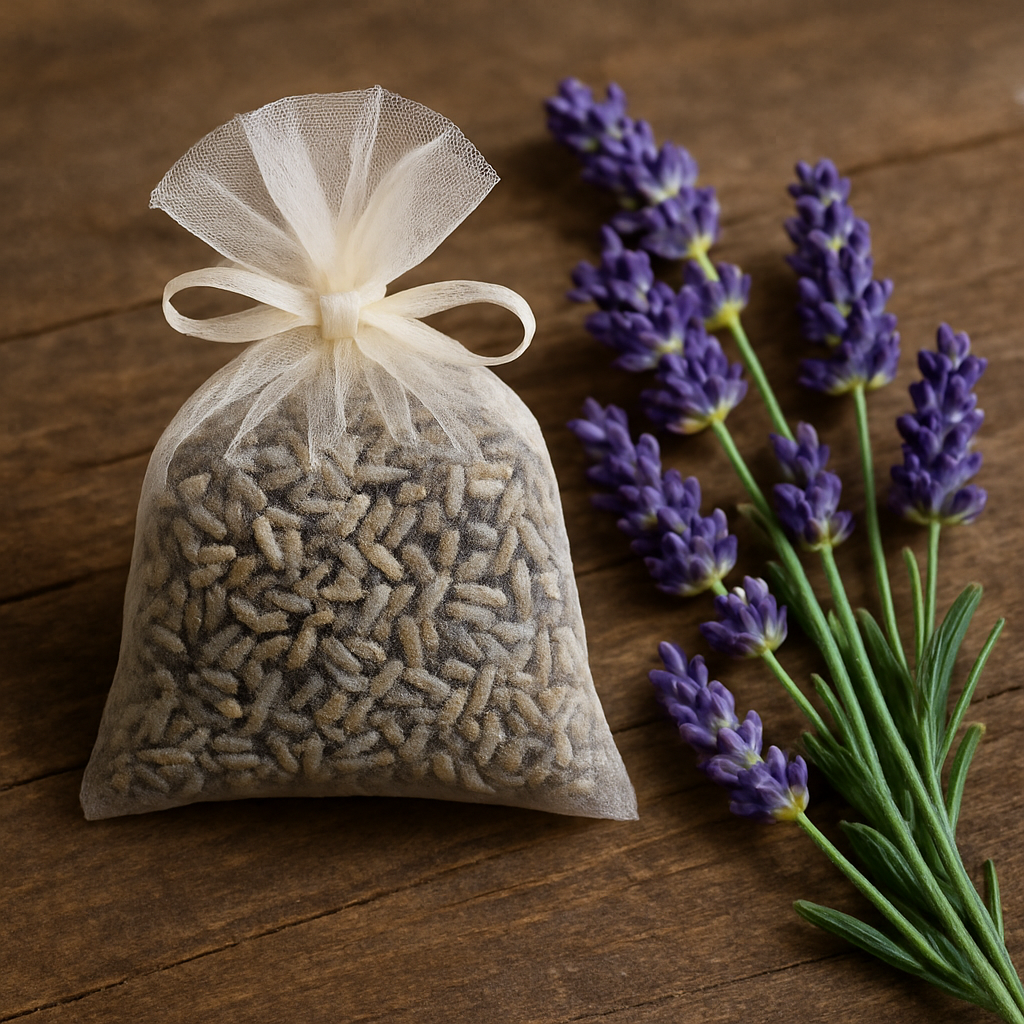
Image: A beautifully crafted sachet filled with dried lavender, a simple yet powerful tool for anxiety relief.
Cultivating a Calmer Future: Your Lavender Journey Continues
As we conclude this comprehensive guide to growing lavender for anxiety relief, it’s clear that this remarkable plant offers far more than just beauty and fragrance. It provides a tangible, accessible pathway to cultivating calm in a world that often feels anything but. From the moment you select your first lavender seedling to the satisfaction of crafting your own aromatic sachets, every step of this journey is an act of self-care, a conscious decision to embrace nature’s healing embrace. We’ve explored the scientific underpinnings of lavender’s anxiolytic properties, delved into the practicalities of successful cultivation, and unveiled a myriad of ways to integrate your homegrown harvest into your daily anxiety management routine.
Remember, the benefits extend beyond the chemical compounds within the lavender plant itself. The very act of gardening—the mindful connection with the earth, the patient observation of growth, the gentle rhythm of tending—is a powerful antidote to the stresses of modern life. It’s a practice that grounds us, centers us, and reminds us of the profound interconnectedness between our well-being and the natural world. Your lavender patch, however small, becomes a personal sanctuary, a living testament to your commitment to a calmer, more balanced existence. It’s a place where worries can dissipate with the breeze, replaced by the soothing scent of purple blooms and the quiet satisfaction of nurturing life.
We encourage you to embark on this rewarding journey with an open heart and a curious mind. Experiment with different lavender varieties, discover the methods of utilization that resonate most deeply with you, and allow the process of cultivation to become a meditative practice. Share your experiences with others, perhaps inspiring them to discover the tranquil power of lavender for themselves. In a world increasingly seeking natural solutions for mental well-being, your homegrown lavender is not just a plant; it’s a beacon of hope, a symbol of resilience, and a fragrant reminder that peace can indeed be cultivated, one bloom at a time. May your garden flourish, and may your journey with lavender bring you profound and lasting serenity.

My name is Michelle Warren, and I’m the founder of Peaceful Gardening. As a 10-year breast cancer survivor, I’ve discovered the profound therapeutic power of gardening. This journey has not only helped me recover but has also become my passion and a source of ongoing peace and joy.
Peaceful Gardening was born from my desire to share the healing benefits of gardening with others. Whether you’re facing health challenges, dealing with stress, or simply looking to connect more deeply with nature, this space is for you.
Over the past decade, I’ve cultivated not just plants, but a deep understanding of how gardening can positively impact mental health. I’ve worked with local community gardens, led workshops on mindful gardening practices, and collaborated with mental health professionals to develop gardening-based stress reduction programs.
Peaceful Gardening was born from my desire to share the healing benefits of gardening with others. Whether you’re facing health challenges, dealing with stress, or simply looking to connect more deeply with nature, this space is for you.
Here, you’ll find evidence-based advice on using gardening as a tool for mindfulness, stress relief, and emotional healing. I share personal stories, practical tips, and scientifically-backed information on how to create your own therapeutic garden space, no matter the size of your yard or balcony.
My mission is to help you discover the joy, peace, and healing that comes from nurturing plants and connecting with nature. Join me in exploring how the simple act of tending to a garden can transform your mental and emotional wellbeing.
Welcome to Peaceful Gardening – let’s grow together towards better mental health!”
